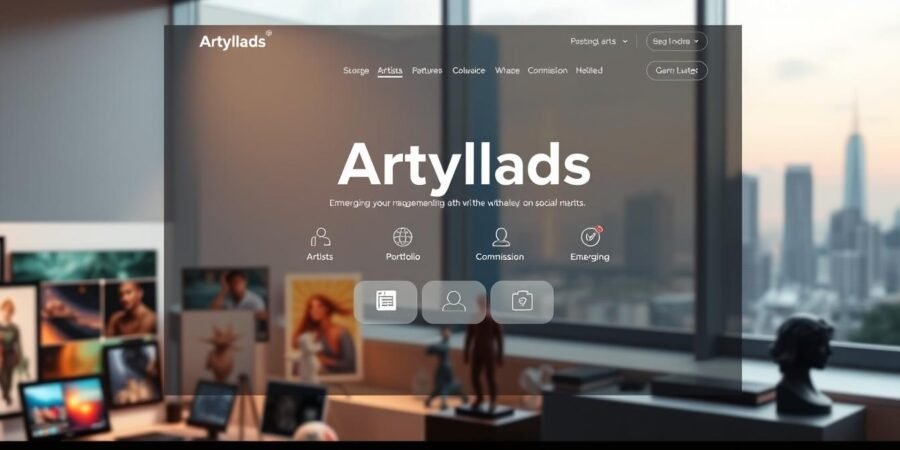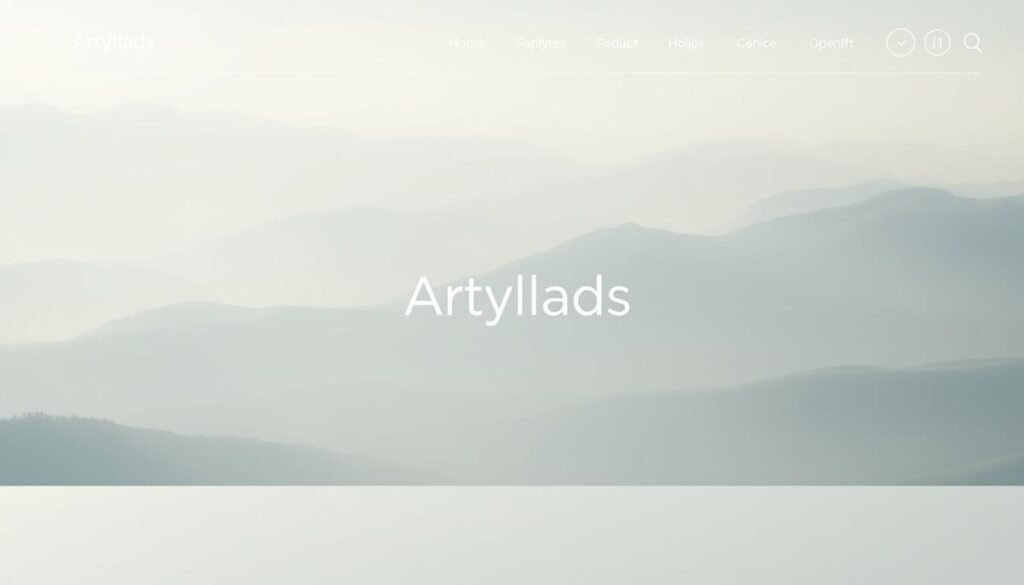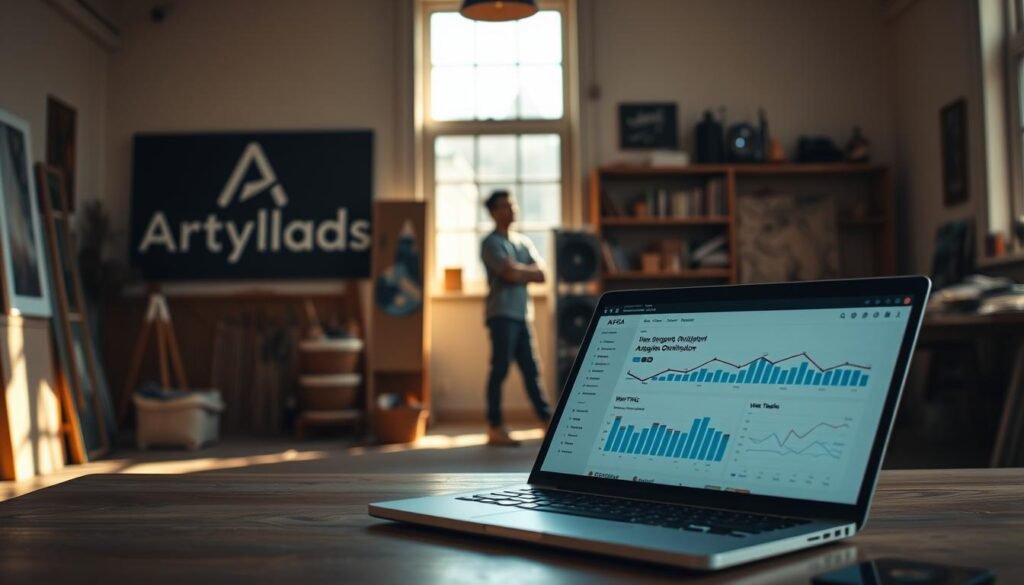Gaining online visibility is key for artists to show their work and find new chances. But, relying only on social media has its limits. I’ve learned that there are other ways to build a strong digital presence without getting lost in social media.
Building an artist blog, having a solid online art portfolio, and joining curated art marketplaces are good strategies. These can help you get noticed by more people. By using these platforms and SEO techniques, you can grow your artistic career.
By looking into these alternatives, artists can move beyond social media’s limits. They can create a lasting online presence.
Key Takeaways
- Create a professional artist blog to showcase your work
- Develop a strong online art portfolio to attract new opportunities
- Join curated art marketplaces to increase your visibility
- Utilize SEO techniques to improve your online presence
- Explore alternative platforms to social media for artistic growth
The Digital Dilemma for Today’s Artists
Artists today face a big challenge: keeping a strong online presence. The art world has grown more competitive with digital platforms. This makes it tough for new artists to get noticed.
Why Many Artists Feel Pressured to Use Social Media
Many artists feel they must use social media to show their work. They want to connect with buyers and keep up with trends. Sites like Instagram and Facebook offer big audiences and chances to be seen.
The Downsides of Social Media Dependency
But, relying too much on social media has its downsides. Changes in algorithms can hide your work. The constant need to post can be stressful. Plus, too much art online can make it hard to stand out.
| Platform | Benefits | Drawbacks |
|---|---|---|
| Social Media | Large audience, easy to share work | Algorithm changes, content oversaturation |
| Online Art Galleries | Curated exposure, professional presentation | Commission fees, selective acceptance |
| Personal Websites | Full control, direct sales | Maintenance required, marketing needed |
Artists need to understand the good and bad of each platform. Looking into personal websites and online art galleries can offer better ways to be seen. It’s important to know where to sell paintings online.
Building a Strong Foundation: Your Artist Website
In today’s world, an artist’s website is key. It shows off their work and lets people explore it in detail. It’s a place for buyers and fans to dive into the artist’s world.
Essential Elements of an Effective Artist Portfolio
A good artist portfolio makes a big impact. It should have high-quality images of your artwork. Include the title, medium, size, and when it was made.
Adding artist statements and exhibition histories helps too. They give your work context. Organizing your portfolio by series or category makes it easier for visitors to follow your artistic path.
Platforms for Creating Your Online Art Store
Artists have many choices for their online art store. You can pick self-hosted solutions for more control or template-based platforms for simplicity.
Self-Hosted vs. Template-Based Solutions
Self-hosted options, like WordPress with WooCommerce or Shopify, offer flexibility. But, template-based sites like Wix or Squarespace are easier to use. They have built-in e-commerce features for setting up an online art store.
Choosing depends on your tech skills, budget, and needs. The best platform for artists is one that’s easy to use yet has the features you need to sell your art well.
Creating Content That Showcases Your Artistic Journey
By sharing your artistic journey, you can connect with potential buyers. This makes you stand out in the art marketplace.
Start by writing an artist blog. It lets you share your inspirations, creative process, and the stories of your artworks. This way, you attract art lovers who value the stories behind your art.
Developing an Artist Blog
An artist blog is a peek into your artistic world. Regular posts with interesting content keep your audience engaged. Share tips, behind-the-scenes looks, and personal stories that show your growth as an artist.
Documenting Your Creative Process
Sharing your creative process makes your art more relatable. It shows the human side of your work. Include sketches, work-in-progress photos, and explain your techniques.
Types of Content That Engage Art Enthusiasts
- Tutorials or step-by-step guides on your creative process
- Stories behind specific artworks or series
- Personal insights into what inspires you
- News about upcoming exhibitions or events where you’ll be showcasing your work
By sharing your artistic journey, you can gain a loyal following. This increases your success in the art marketplace. It makes it easier to sell paintings on the internet.
Expanding Emerging Artists’ Online Visibility Through SEO
Emerging artists can greatly improve their online presence with good SEO. The art world is now more digital than ever. A strong online presence is key to success. By making their websites and content search engine friendly, artists can reach more people.
Artist-Specific SEO Strategies
To get noticed online, emerging artists need artist-specific SEO strategies. They should use the right keywords in their content, meta tags, and image alt tags. For example, instead of just “artist,” they could use “contemporary oil painter” or “sculptor.”
Keywords That Connect You With Art Collectors
Finding the right keywords is essential for art collectors. Artists should look into keywords that match their style, medium, and subjects. For example, an abstract landscape artist should use “abstract landscape artist” or “modern abstract painting.”
Local SEO for Exhibition Opportunities
Local SEO is crucial for artists wanting local exhibition chances. They should optimize their online presence for local searches. This means using their city or region in keywords and creating content for local art events. For instance, a New York artist could use “New York contemporary artist” to attract local galleries and collectors.
By using these SEO strategies, emerging artists can boost their online visibility. This can attract more collectors and increase their success in the art market.
Where to Sell Paintings Online: Curated Art Marketplaces
Curated art marketplaces are changing how artists sell their work online. These sites offer a focused space for artists to show their paintings to a specific audience.
The Benefits of Specialized Platforms for Artists
Specialized art marketplaces have many advantages for artists. They provide a space just for art, cutting down on the competition found elsewhere. This leads to more visibility and meaningful connections with buyers.
- Increased exposure to art collectors and enthusiasts
- A platform tailored to the art community
- Opportunities for networking with other artists and art professionals
Spotlight on Artyllads.com
Artyllads.com is a great example of a curated art marketplace. It connects artists with collectors and enthusiasts who seek unique, high-quality art.
“Artyllads.com has been a game-changer for me. It has allowed me to reach a wider audience and sell my paintings to people who truly appreciate my art.” –
How Curated Marketplaces Help You Sell Custom Paintings
Marketplaces like Artyllads.com also help with custom paintings. They offer a space for artists to showcase their work and connect with buyers. This way, artists can get commissions and create custom pieces that meet clients’ needs.
| Benefits | Curated Marketplaces | General Online Platforms |
|---|---|---|
| Target Audience | Art collectors and enthusiasts | General consumers |
| Visibility | Higher due to curation | Lower due to high competition |
| Networking Opportunities | Strong within the art community | Limited |
Partnering with Online Art Galleries
Working with the right online art gallery can boost your art career. These platforms let artists show their work to people all over the world. This can lead to more sales and exposure.
Finding the Right Online Galleries for Your Style
To find a gallery that fits your style, start by looking at galleries that feature similar artists. Choose galleries with a strong online presence and active engagement with their audience.
Consider the gallery’s commission rates, contract terms, and the types of art they show. These factors are important.
| Gallery Features | Description | Benefits |
|---|---|---|
| Global Reach | Online galleries can showcase your art to a worldwide audience. | Increased exposure and potential sales. |
| Curated Selection | Many online galleries curate art, ensuring a level of quality. | Enhanced credibility for featured artists. |
| Marketing Support | Some galleries offer marketing and promotional support. | Helps artists gain more visibility. |
How to Approach Digital Galleries That Buy Art Online
When reaching out to online galleries, make sure your online presence is professional. This includes a portfolio and artist statement. Follow the gallery’s submission guidelines closely.
Tip: Keep your online portfolio current and show your best work. This will make a lasting impression.
Email Marketing: Building Direct Connections with Art Collectors
Email marketing is a strong tool for artists to connect with art collectors. By creating an email list, artists can share their work and creative process. This builds a loyal community of fans.
To succeed in email marketing, artists must create engaging content. Share behind-the-scenes stories, new artwork, and special promotions. This connects with your audience.
Creating an Engaging Artist Newsletter
A good newsletter keeps artists in mind with potential buyers. Include:
- High-quality images of your artwork
- Personal stories about your creative process
- Upcoming events and exhibitions
Growing Your Subscriber List Without Social Media
To grow your email list without social media, be creative. Add a sign-up form to your online art store. Offer incentives like exclusive content or early access to new artwork.
| Strategy | Description | Benefit |
|---|---|---|
| Add sign-up form to website | Include a visible sign-up form on your artist website | Increases visibility and encourages subscriptions |
| Offer incentives | Provide exclusive content or promotions to subscribers | Fosters loyalty and encourages sharing |
Conclusion: Crafting Your Unique Path to Online Recognition
As an emerging artist, you can shine online without social media. A strong artist website is key. It lets you share your art journey and use SEO to get seen more.
Looking into art marketplaces and teaming up with online galleries can boost your visibility. Email marketing helps you connect directly with collectors. These steps help you sell art online and reach more people.
Don’t be afraid to try new ways to get noticed online. Create your own path to success in the art world.




